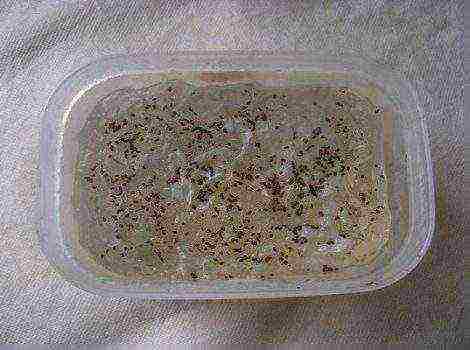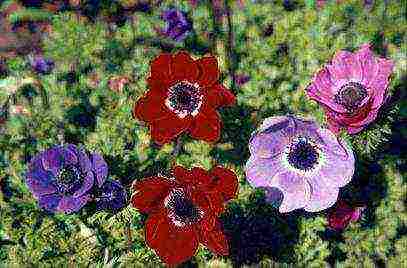Content
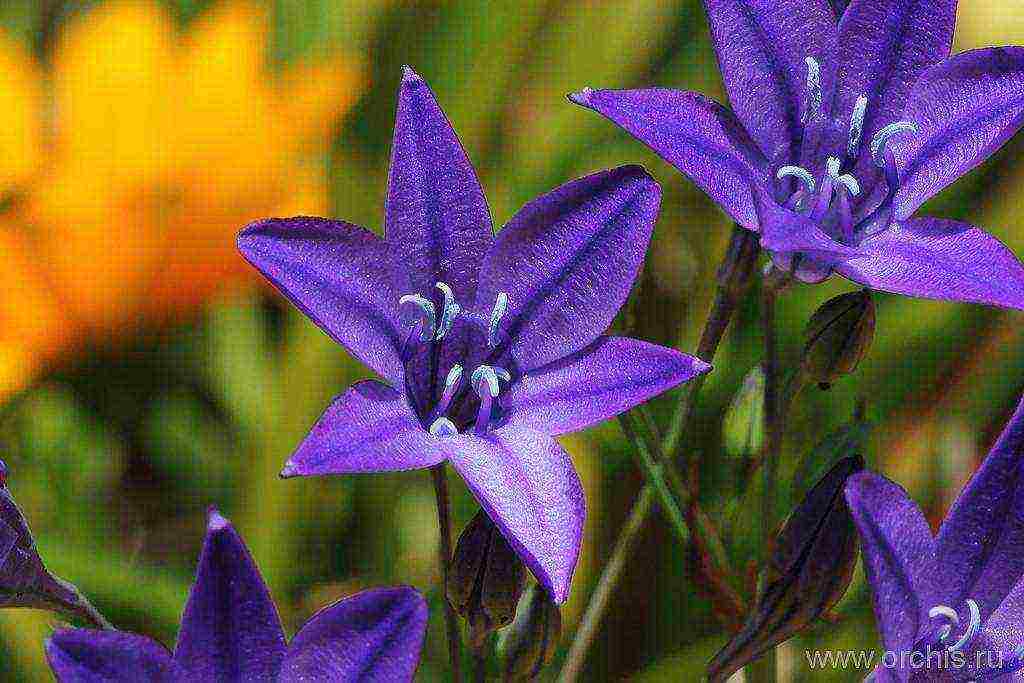
Tritelia is often confused with brodieya. They both belong to the Brodiaea subfamily and are very similar.
Description of the tritelia plant
Tritelia (Triteleia) is a genus of the Asparagaceae family, but sometimes referred to as Liliaceae and Alliaceae. These are bulbous, perennial herbaceous plants. With flat linear leaves. Their stems are straight. Long peduncles, umbellate inflorescences, funnel-shaped perianth. Bell-shaped flowers of different color: purple, blue, pink. It blooms outdoors in June. In a greenhouse, it can bloom twice a year. The genus contains 10 species.
Care and planting of tritelia
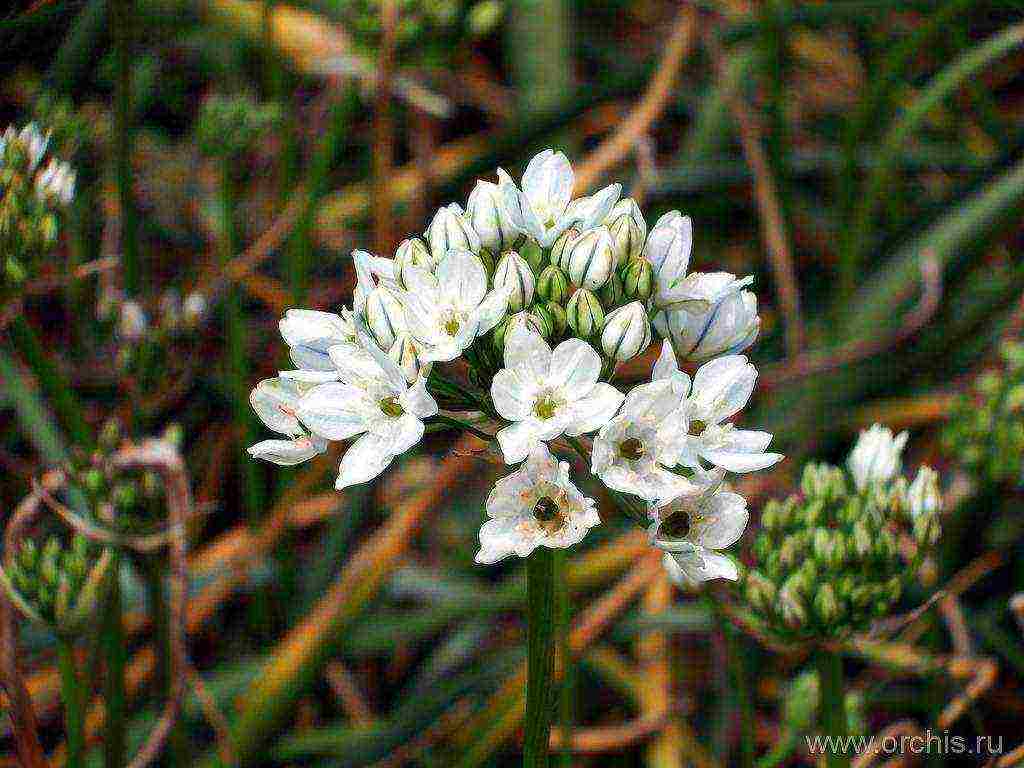
It is grown in open ground, in greenhouses and indoors. Tritelaye will be good in the sun. However, it still tolerates a light shadow calmly. It just might not bloom so brightly. But it must be protected from drafts.
In places with a warm climate, tritelia is planted in September, with a cold one in April. Before that, you can fertilize the soil with organic matter. Add compost or rotted foliage.
The plant is tolerant of drought. But during the growth period, he needs abundant watering. However, it is important that there is no stagnation of water in the ground. Therefore, good drainage is desirable. Tritelia is also sensitive to temperature changes.
For the winter, the plant must be insulated with sawdust or spruce branches. Better yet, dig up the bulbs when the leaves are dry. Then the bulbs are dried and stored in sawdust. They form many babies if fed during dormancy.
Reproduction of tritelia
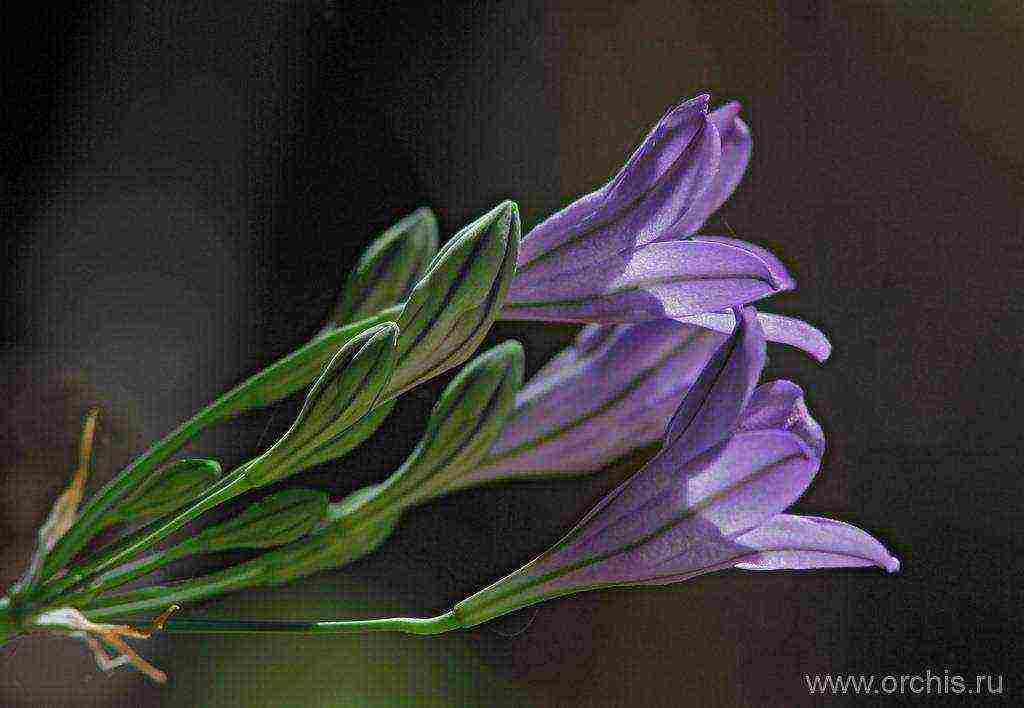
- Seeds should be sown in containers with light soil. Better to do this in April. And leave them in a lighted place until germination. They are moved into open ground depending on the climate. In areas with warmer winters, this can be done in the fall. In the same place where winters are harsh, it is better to sow in spring. With this reproduction, the plant can bloom after 3-4 years. But some species bloom as early as 1-2 years.
- Children from the bulb must be separated when digging it up. And it is good to plant them in the spring, so that the earth is already warmed up. Sand is added to the hole before planting. Then you need to cover it with soil and water it well.
Some sprout bulbs at home. And then they move it into open ground. But this is not recommended. At this time, tritelia is actively growing and the transplant will damage it. That is why it is advisable to immediately plant the bulbs in a permanent place.
Fertilizer tritelia
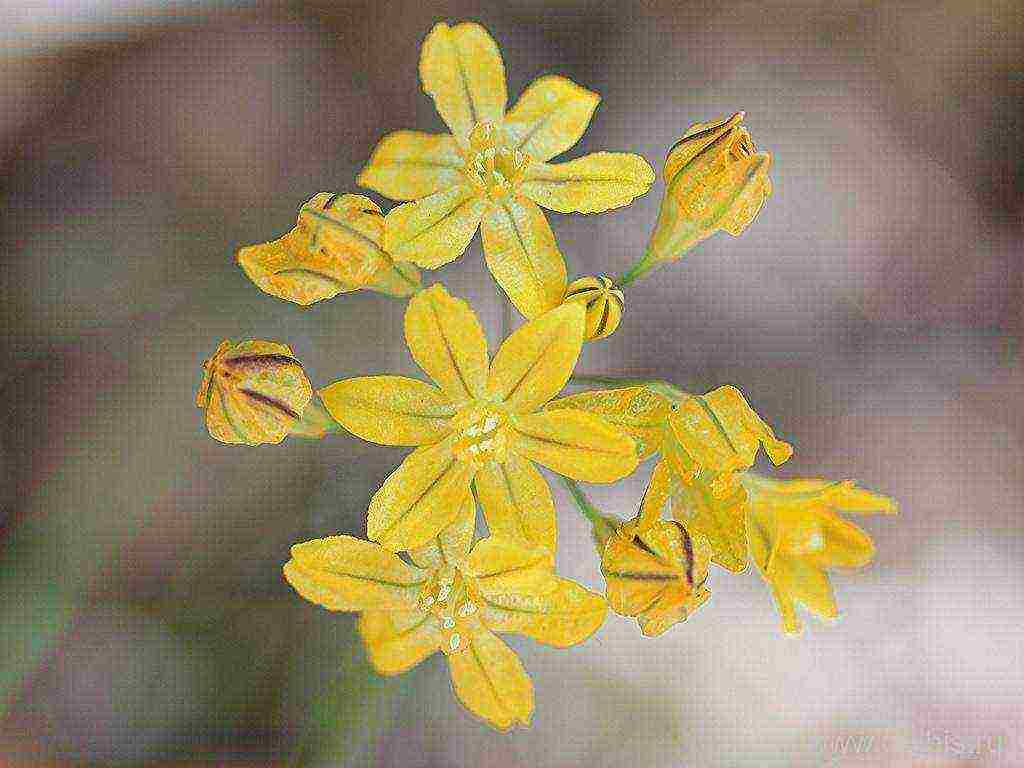
It is best to fertilize with mineral formulations. Tritelia especially needs feeding in the growth phase. You can alternate mineral fertilizers with organic matter.
Pests and diseases
From frequent fertilization, leaves can turn brown. In room conditions, this happens if the air is too dry. She also suffers from gray rot. Usually annoyed by nematodes and nematodes, aphids. Spraying with soapy water or insecticides may help.
Species and varieties of tritelia
- Tritelia Bridges (T. bridgesii Wats.) View with purple flowers.
- Large-flowered Tritelia (T. Grandiflora) Up to 70 cm high with blue flowers.
- Tritelia Henderson (T. hendersonii) Flowers of a salmon-colored plant with purple stripes.
- Triteley Howelli (T. Howelli) Height can be up to 60cm. The flowers are dark purple.
- Loose tritelia (Triteleia laxa Benth.). The flowers are usually blue-purple, but there are also white ones.
Tritelia plant video

adorable petals
Last year, at a garden fair, I stocked up on crocuses, bought 25-30 bulbs of different varieties. The seller, could not get enough of me that he would not offer - I take everything, everything is interesting to me. I knew where I was going, I stocked up for this denyushka.True, only crocuses were not enough, I also brought home 3 rose bushes and astilba in a small pot. Well, just a flower shopaholic.
So, the same seller offered me to buy tritelia bulbs. He did not have a picture, but the words gave the impression of a beautiful flower. I bought myself a little "for trial".
I got the Rudy or Rudy tritley variety. An interesting name for a blue flower. I will tell you my experience in growing this flower.
The planting material was treated with a pink solution of potassium permanganate for 30 minutes. By analogy with Ixia, I planted the tritelia bulbs in pots to the recommended depth of 8 cm. By the way, I had 10 Dutch bulbs with Ixia, and what do you think? Kapustyanka or also called Medvedka ate everything. She is such a glutton that she will not disdain anything.

tritelia
For almost 2 weeks I was waiting for the sprouts to appear. But, then I realized that the planting depth was too great for the triteli bulbs. She carefully dug them up and planted them to a depth of 5 cm.
During transplantation, I examined the planting material - all sprouted with thin roots, a cone of leaves formed at the top of the bulbs. Soon after transplanting, graceful leaves appeared above the soil surface.
Tritelia grew very slowly. I came to the conclusion that she does not like potty content. The tips of its long, narrow leaves dried up with the slightest lack of water. My beautiful triteley, Rudy, blossomed only after 3 months.

white tritel
At the top of the peduncle, a bundle-shaped inflorescence of tubular flowers has formed. The flowers of the tritelia are simple, but of a beautiful bright blue color. The inner petals are curled up so much that it is almost impossible to see the contents of the pharynx. Flowering lasted about a week, after which the peduncle was cut off.
Like all bulbous plants, the leaves soon began to turn yellow. After they dried up, I dug up the bulbs with the children. At the end of September, she planted her in a garden bed near the onion. Tretley buds will bloom and decorate the flower bed, and by that time the onions will have faded and will lose their decorative effect.
This flower has such a feature. All bulbs we are used to bloom in spring, and tritelia blooms in July, provided that it has already wintered. And the first time it can bloom in the month of August.
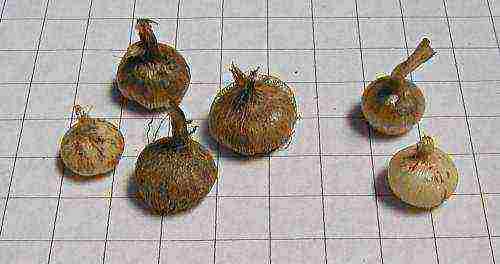
these are the bulbs
You can plant bulbs in spring and autumn. Again, it winters well in the southern regions, but in the northern regions it can freeze out, so it is best to dig it out. Store at a temperature of 6 - 8 degrees.
Caring for trites is not difficult - watering as the soil dries up, loosening. Remember, bulbous plants cannot stand any stagnation of water. Prefers sunny locations. He simply cannot stand transplants, so a lot of plants disappear.
Before direct planting in the ground, it is better to germinate in a pot, and only then do the transshipment.
The flower is a real mother, a heroine, if during the dormancy the plant is fed, many children will grow. Hence another funny name - "Fool's Onion" fool's onion.
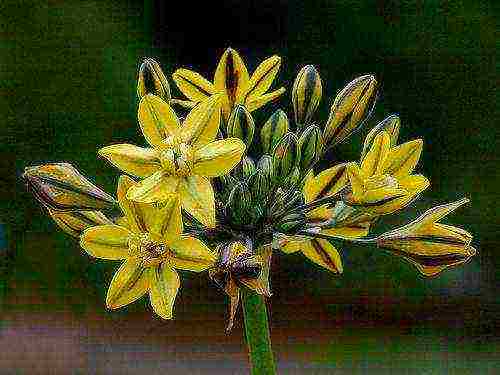
expressive yellow color
Tritelia is so charming thanks to its flowers and bells. Plant her near the gate or at the entrance to the house. She will always greet you with a slight twitch in the wind, as if she will now sing ...
Read also:
A genus of perennial corms of the Brodiaeoideae family that grows naturally in western North America and California, both in open spaces and in partial shade. The genus name "Triteleia" comes from two Greek words - "tri" - three "teleios" - ideal, emphasizing the distinct threefoldness of the flower petals.
A small corm (about 2.5 cm) produces several narrow, erect leaves 20-60 cm long. Inflorescences with beautiful funnel-shaped flowers are located at the top of a bare peduncle, which in partial shade can reach up to 50 cm in length.
Flowers, depending on the variety, can be blue, light blue, purple, white, pink and yellow.
Plants grown in the greenhouse bloom twice a year, in May and October.In the ground and in pots, the perennial bloom once in mid-June, and flowering lasts for several weeks. The fruit is a capsule with numerous black seeds.
Corms are edible and taste like boiled potatoes.
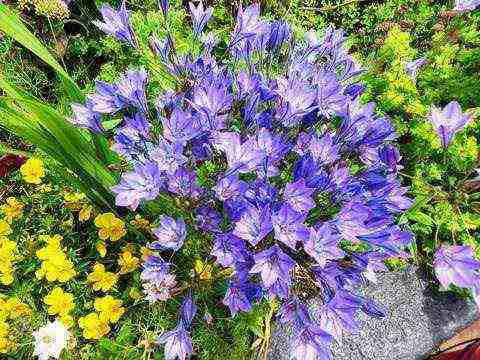
Planting and leaving
Tritelia grows best in full sun, protected from drafts. With a lack of lighting, the number of peduncles decreases, and the palette of flowers is not so saturated.
The landing date for Tritelia is mid-April. Corms are planted to a depth of 5-8 cm and they sprout quite quickly. The main requirement of the soil is its nutritional value and good water permeability. Therefore, before planting, add crushed rotted leaves, a little compost or any other organic matter to the soil.
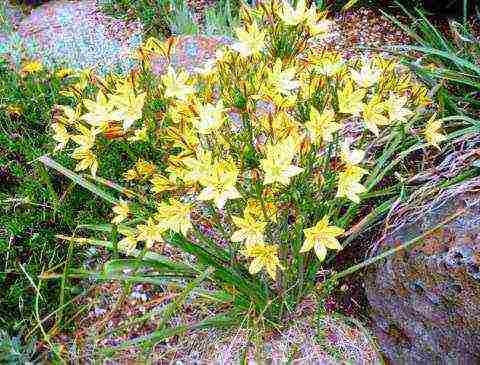
Provide good watering for the perennial during the period of active growth. In summer, it tolerates drought well.
The plant looks beautiful in dense plantings, in rockeries and is ideal for mixed borders. As companions, crops such as geissoriza, escholzia, tigridia, levkokorina, as well as bright ground cover are planted.
Frost resistance
Perennial tolerates light frosts well, but it is advisable to provide the plant with a shelter from spruce branches or sawdust. In areas with severe winters, the bulbs are dug out of the soil immediately after the leaves dry, that is, at the end of August. Dry and store in sawdust in a cool and dry place.
Reproduction
The plant propagates by bulbs - children and seeds. When sowing seeds, it should be remembered that we will receive flowering plants only after 3-4 years.
Did you like the article? Vote!
1 1 1 1 1 Rating 4.00
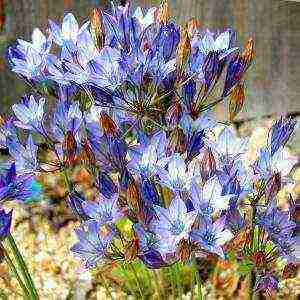 Triteliae is a perennial bulbous plant belonging to the Brodiaea subfamily. Quite often it is sold under the name Brodieya.
Triteliae is a perennial bulbous plant belonging to the Brodiaea subfamily. Quite often it is sold under the name Brodieya.
The plant is not tall (usually no higher than 50 cm), with narrow long leaves. Flowering in early summer. The flowers of Tritelia are quite delicate, in most species they resemble bells collected in a large inflorescence.
Look great in flower beds and among rocky compositions, often grown for cutting. Tritelia is also grown in pots.
The native land of the plant is the west coast of North America.
Interestingly, the flowers and bulbs of the plant are quite edible. The Indian tribes have used them for food since ancient times. Bulbs can be eaten raw, boiled, fried. Flowers are added to salads.
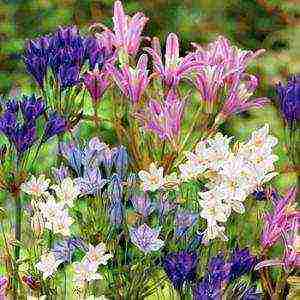 Views.
Views.
Consider the most common types in gardening:
Loose tritelia (Triteleia laxa) - one of the most popular species among gardeners. Perennial bulbous plant (like all other species) with a height of 20 to 70 cm (depending on the variety). The leaves are green, thin. The flowers are purple or white. Flowering begins in June.
The most popular varieties: Queen Fabiola (up to 40 cm in height with blue-violet flowers), Koningin Fabiola (up to 50 cm in height with purple flowers).
Tritelia large-flowered (T. grandiflora) Is also a fairly common species. The plant is up to 70 cm high. The flowers are blue and purple, large (up to 4 cm in diameter), collected in a denser umbrella inflorescence than the previous species. The leaves are thin, gray-gray. Blooms in June.
The following types are also common, but much less popular: T. Bridgesii, T. Hendersonii, T. Howelli, T. Peduncularis.
Growing.
The soil.
Drained, light, nutritious. The plant does not tolerate waterlogging and stagnant water.
A place.
Open solar. Also tolerates light partial shade. Requires wind protection. Also sensitive to temperature extremes.
Reproduction. Landing.
Bulbs and seeds.
Both types of reproduction are not particularly difficult. Note that with seed reproduction, some plant species bloom already in the first or second year. The bulbs are separated when dug up at the end of summer.
In Central Russia, planting is carried out in the spring, as soon as the ground freezes and warms up a little. It is not worth planting Tritelia at home first, and then transplanting it into the ground, since in the growth stage it practically does not tolerate transplants.
 Planting is carried out in pre-prepared holes (it is good to add a handful of sand to each hole), to a depth equal to 2-3 heights of the bulb itself, and at a distance of 10 cm from each other.The bulb is covered with earth, watered.
Planting is carried out in pre-prepared holes (it is good to add a handful of sand to each hole), to a depth equal to 2-3 heights of the bulb itself, and at a distance of 10 cm from each other.The bulb is covered with earth, watered.
Plant care.
Watering, weeding, loosening. In the growth stage, the plant does not tolerate transplantation.
In Central Russia, bulbs for the winter must be dug up and stored in a dry, dark, cool place (storage conditions are the same as for dahlia tubers).
And read about Yucca filamentous here.
Other posts on the topic:

